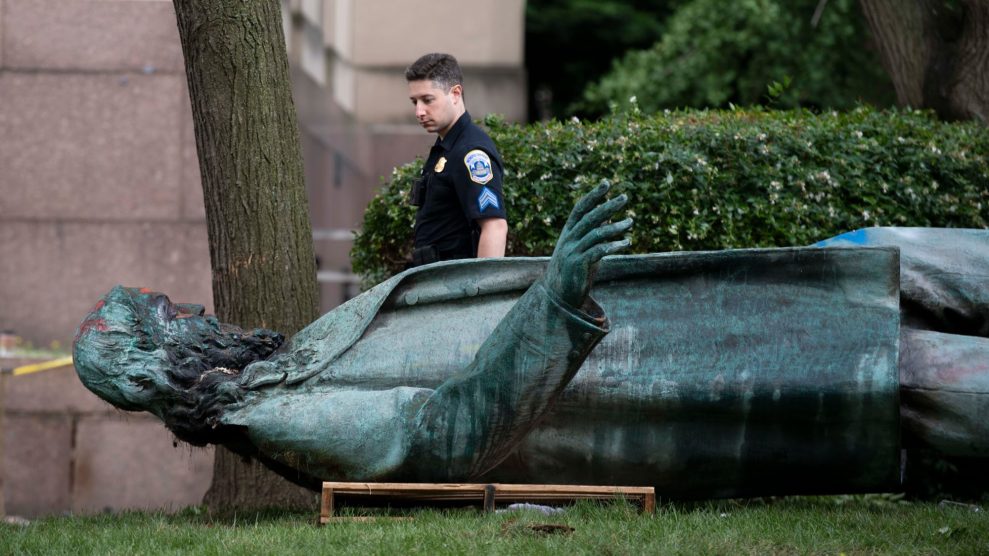The National Park Service (NPS) announced on Monday that the statue of Confederate General Albert Pike in Washington, DC, will be restored and reinstalled within the next few months. This follows the statue’s removal in June 2020 during protests sparked by the murder of George Floyd by Minneapolis police. The decision has generated significant debate over its implications for American history and public memory.
The statue, which was erected in 1898, was taken down by protesters who viewed it as a symbol of oppression. According to the NPS, the statue honors Pike’s “leadership in Freemasonry,” a male-only secret society. However, the agency did not address Pike’s controversial history, including his role as a Confederate general who fought to preserve slavery and his possible connections to the Ku Klux Klan.
In a press release, the NPS indicated that the statue has been in storage since its removal and is currently undergoing restoration. Officials expect the statue to be reinstalled by October 2023. The justification for this decision cites two of Donald Trump’s executive orders: “Making the District of Columbia Safe and Beautiful” and “Restoring Truth and Sanity to American History.”
This move is part of ongoing efforts by the Trump administration to reshape the narrative surrounding American history, focusing on a version that minimizes historical divisions. In 2020 alone, nearly 100 Confederate monuments were removed across the United States, according to a survey by the Southern Poverty Law Center (SPLC). A recent SPLC report also noted that over 680 Confederate monuments remain standing.
Critics of the statue’s reinstatement have expressed their disapproval. Eleanor Holmes Norton, DC’s non-voting Democratic delegate to Congress, stated that she plans to reintroduce legislation aimed at permanently removing the statue. In her statement, she called the decision to reinstall the statue “odd and indefensible,” asserting that “a statue honoring a racist and a traitor has no place on the streets of DC.”
The decision to restore the statue has reignited discussions about how the United States grapples with its complex and often painful past. Critics argue that the move represents an attempt to glorify figures associated with racism and oppression. Trump has previously criticized institutions like the Smithsonian for what he perceives as a divisive, race-centered ideology, leading to the removal of references to his two impeachments from the National Museum of American History, although this information is set to be restored shortly.
In a broader context, the administration’s actions reflect an ongoing contest over the portrayal of American history. Recent initiatives have included renaming military bases that honored Confederate leaders and altering public narratives surrounding gender and race on government websites. Additionally, some members of Congress have proposed legislation to rename public landmarks in honor of Trump and his family.
As the NPS prepares for the statue’s reinstallation, the conversation surrounding it underscores the ongoing national debate about race, history, and memory in the United States. While the government moves forward with its plans, the public response remains deeply divided, revealing the complexities of how history is honored and remembered in contemporary society.








































































